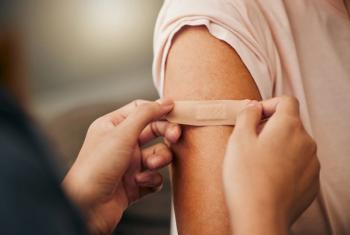
Preventing exploitation of kids on the Internet
The culture and technology for online interaction continue their rapid evolution, and the processes for keeping children safe on the Internet must do the same, said several experts at a recent session held by the Child Welfare League of America and others in Washington, DC.
The culture and technology for online interaction continue their rapid evolution, and the processes for keeping children safe on the Internet must do the same, said several experts at a recent
For example, what investigations are seeing now is an increase in “sextortion,” the coercing of children into sexual activity online, said Holly Hawkins, vice president of the
In one instance, a young girl was tricked into posing naked online for a video so a “painter” she had met on the Internet could paint her portrait. Later, that person threatened to share the video with the girl’s friends if she did not continue the activity. Unfortunately, the child had shared her “friends” list via a social network. The child finally reported the problem herself.
Another girl told her mother that someone she met online had her phone number and claimed to know where she lived. The person convinced the girl to allow nude photos of her to be taken online by threatening to do bodily harm to her family.
There also are indications, Hawkins said, that some children in similar circumstances are not telling anyone.
Taking action
With this and other online safety issues, the center tries to take information it gets about problems with children online, then determine what the “trick” is that allows a predator to exploit a child and apply that knowledge to prevention. Among its recommendations, Hawkins noted, is that parents should have a basic understanding of the technologies and programs their children are using, including the functionalities and the ways children can be protected.
Another is holding the online industry responsible for having age-appropriate programming, with appropriate policies and the means to enforce them, as well as safety messaging throughout the platforms, said Hawkins.
She indicated protective technologies, such as filtering software, are especially important for younger children. “Typically in young children, they come across [inappropriate things] inadvertently by clicking on a link or seeing a pop-up. They are not at the point [where] they are seeking it out,” she said.
Once children are mobile and on the social-networking platforms, protecting them is more about ensuring they have a trusted adult to go to and a solid understanding of the risks, she explained.
The center has analyzed 140 million images and videos depicting children in some kind of sexual behavior and has received 2.8 million reports of suspected child sexual exploitation, Hawkins said.
The NCMEC
The center, Hawkins said, has a good relationship with electronic service providers, who in this country are legally required to report to NCMEC any suspected child exploitation on their sites. Between 2012 and 2014, the average time it took providers to take down reported exploitive images of children dropped from 4.4 days to 1.9 days.
All these issues may explode globally in years to come, warned John Carr, senior expert advisor to the United Nations, at the same panel. Today, he said, four-fifths of Internet users are in the developed world, but much of the future growth will be in developing countries.
Given that the developed world with its advantages has not done very well with some aspects of the Internet, there is a “potential for a disproportionately bad impact of that growth” in developing countries, he said.
Ms Foxhall is a freelance writer in the Washington, DC, area. She has nothing to disclose in regard to affiliations with or financial interests in any organizations that might have an interest in any part of this article.
Newsletter
Access practical, evidence-based guidance to support better care for our youngest patients. Join our email list for the latest clinical updates.











